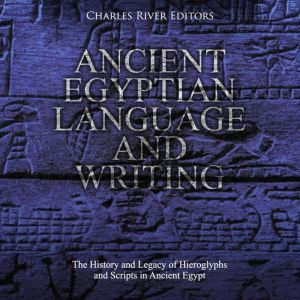

List: $6.95
| Sale: $4.87
Club: $3.47
Ancient Egyptian Language and Writing: The History and Legacy of Hieroglyphs and Scripts in Ancient Egypt
Author: Charles River Editors
Narrator: Colin Fluxman
Unabridged: 1 hr 12 min
Format: Digital Audiobook Download
Publisher: Charles River Editors
Published: 09/06/2019
Categories: Nonfiction, History, Egyptian History, Middle Eastern History, Ancient History
Synopsis
Perhaps not surprisingly given how advanced they were in comparison to contemporaries, the Egyptians invented one of the first writing systems ever, and for centuries, people thought these ancient texts held some sort of secret, be it aliens, advanced technology lost to the world, or mystical cures for all of the world’s ills. Even the ancient Egyptians saw their writing systems as full of mystery and hidden knowledge - according to Egyptian mythology, writing was invented by the ibis-headed god Thoth, the most intellectual of the gods. He was a scribe, also associated with mathematics, medicine, and astronomy, and could appear as either an ibis or a baboon. Thoth was originally a lunar god, strongly associated with recording events and time. He is more commonly known as the scribe who records judgment in the famous weighing of the heart scene in which a person’s fate in the afterlife is decided To the Egyptians, writing was a gift of the gods and should be used accordingly. It was powerful and had the ability to create. For example, written formula offerings could provide sustenance in multiple ways, including being written, depicting the offerings, and read aloud. Each of these methods brought offerings to the recipient for all of eternity. Speaking words was especially powerful as shown in myths where the gods create in this fashion. One such myth is the “Memphite Theology,” where the creator god Ptah creates other beings through the “thoughts of his heart and the words of his mouth.” Furthermore, writing a person or a god’s name gave them power, and erasing their names took the power away. By placing his name on it, a person or king could usurp a statue from someone else. Since writing was hieroglyphic, it was also art, and the images held power. This is evidenced by signs or images being disfigured in tombs or funerary settings, so as not to hurt the owners.
